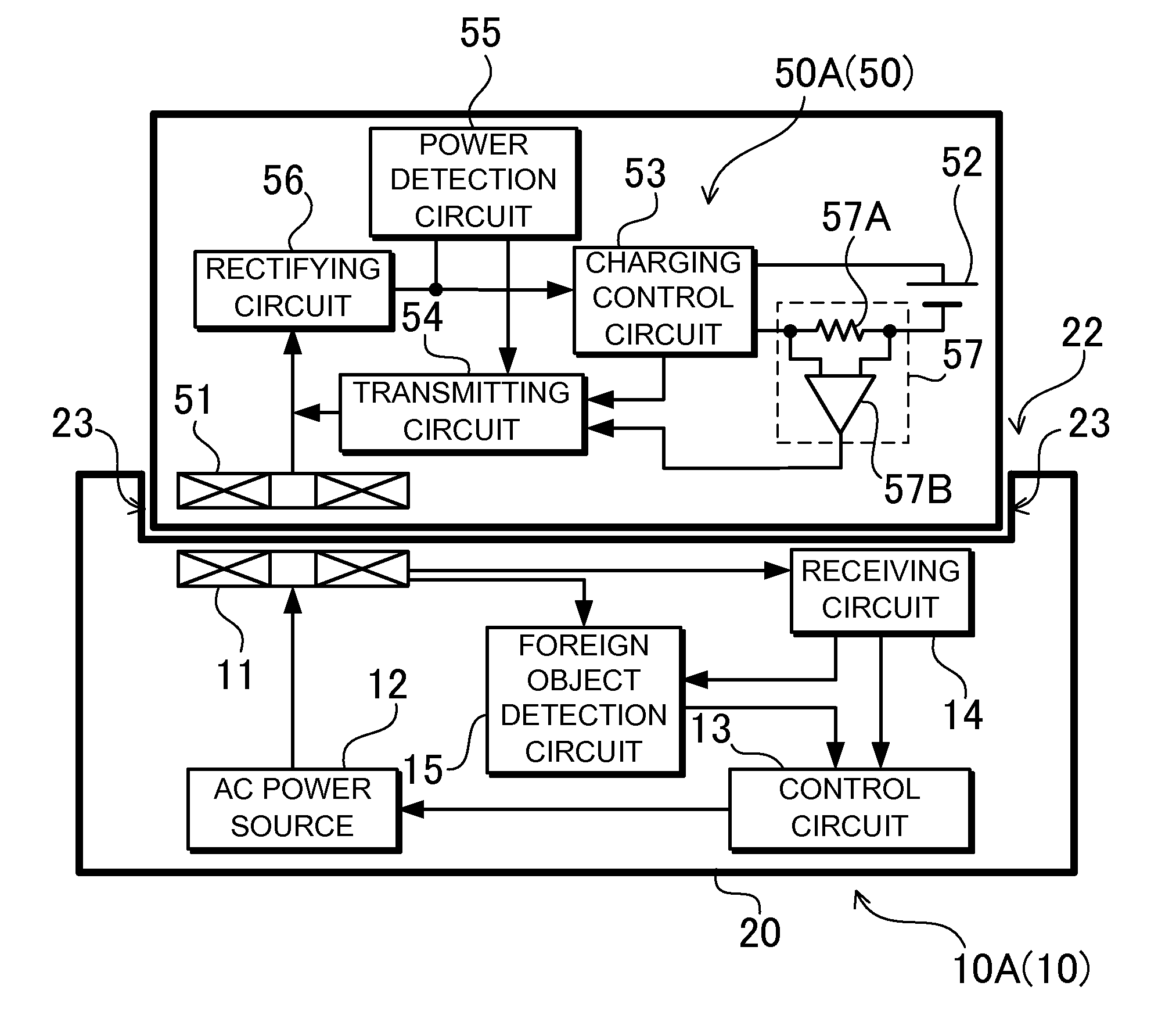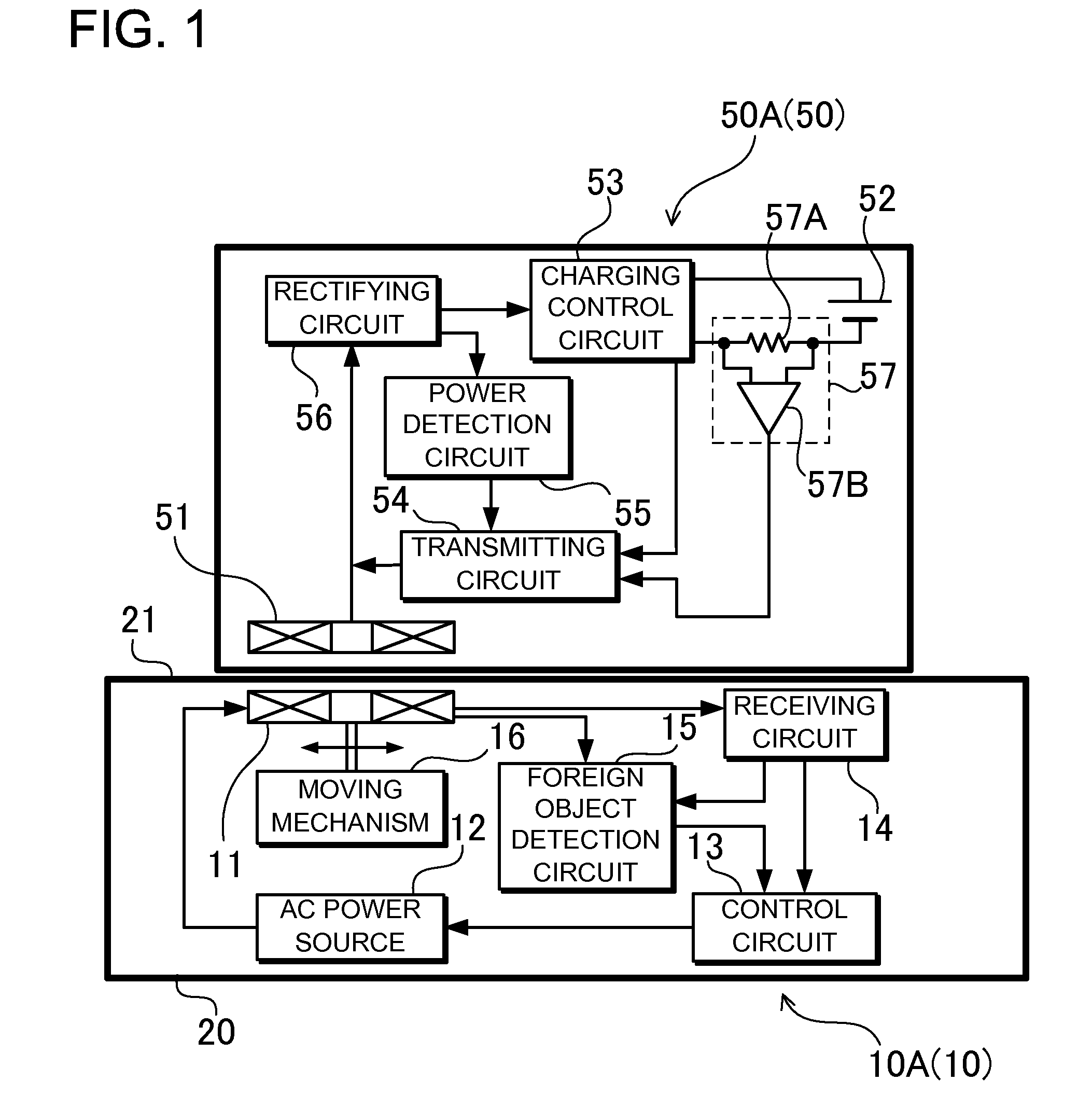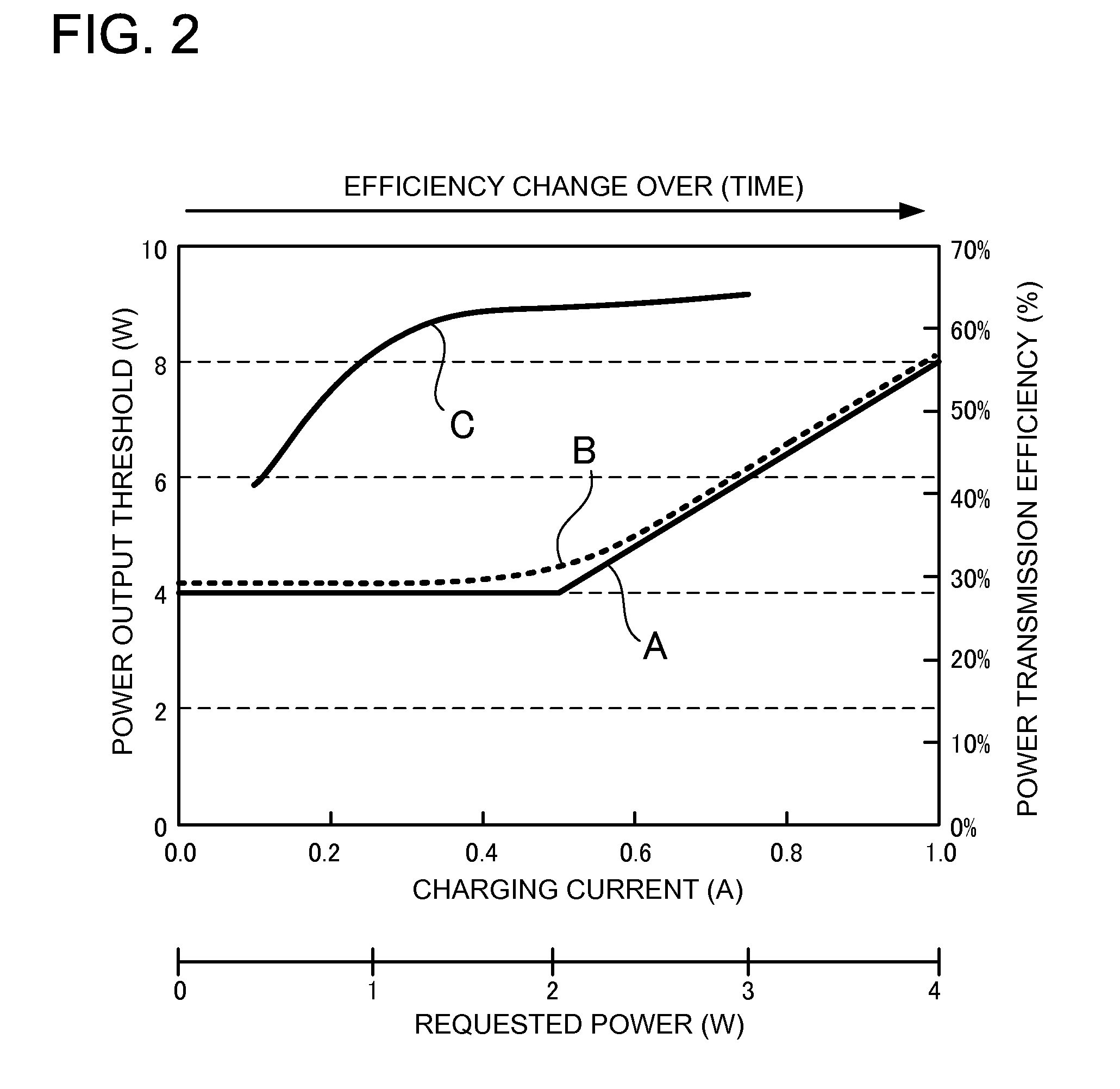Contactless method of supplying power
- Summary
- Abstract
- Description
- Claims
- Application Information
AI Technical Summary
Benefits of technology
Problems solved by technology
Method used
Image
Examples
Embodiment Construction
[0026]The following describes embodiments of the present invention based on the figures.
[0027]FIG. 1 is a block diagram showing a power supply stand that transmits power and portable device for the contactless method of supplying power of the present invention. This figure shows a portable device 50 placed on a power supply stand 10 to supply power from the power supply stand 10 to the portable device 50. In the embodiment described below, the power supply stand 10 is a charging pad 10A, the portable device 50 is a battery powered device 50A, and power is supplied from the charging pad 10A to the battery powered device 50A to charge a battery 52 housed in the battery powered device 50A.
[0028]However, the present invention does not limit the power supply stand to a charging pad and the portable device to a battery powered device. Power can also be supplied from the power supply stand to a portable device that is an illumination device or a charging adapter. A portable device that is ...
PUM
 Login to View More
Login to View More Abstract
Description
Claims
Application Information
 Login to View More
Login to View More - R&D
- Intellectual Property
- Life Sciences
- Materials
- Tech Scout
- Unparalleled Data Quality
- Higher Quality Content
- 60% Fewer Hallucinations
Browse by: Latest US Patents, China's latest patents, Technical Efficacy Thesaurus, Application Domain, Technology Topic, Popular Technical Reports.
© 2025 PatSnap. All rights reserved.Legal|Privacy policy|Modern Slavery Act Transparency Statement|Sitemap|About US| Contact US: help@patsnap.com



